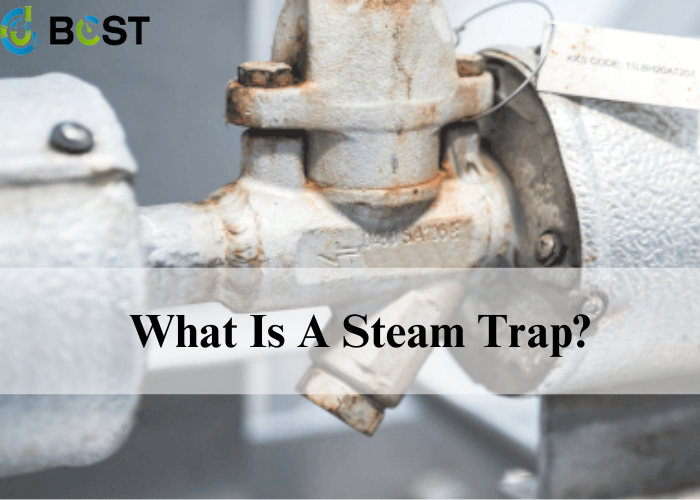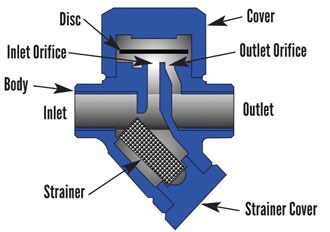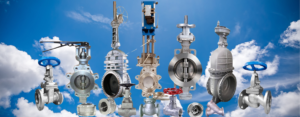
A steam trap is a valve that automatically discharges condensate and non-condensable gases to stop steam leakage. In the industrial sector, steam is often used to heat products or to power machinery and equipment. In such cases, steam traps are needed to ensure that steam does not leak.

2. What is the purpose of installing a steam trap?
Steam is a gas formed when water is heated and evaporated. In order to evaporate, the water molecules must absorb enough energy to rupture the molecules (hydrogen bonds, etc.). This conversion of energy from liquid to gas is called “latent heat”.
Steam Basis: A heat exchanger uses the latent heat of steam to convert thermal energy to a product, but when the steam has completed its heating task (i.e., lost its latent heat), the steam condenses to form condensate. In other words, condensate does not have the ability to heat an object the way steam does. Heat transfer efficiency will be affected, so condensate must be discharged quickly, both in the steam transport piping and in the heat exchanger.
3. What is the problem with using normal valves?
It may sometimes be thought that other regulating valves can be used instead of conventional steam traps, and that condensate discharge can be achieved by manually adjusting the opening of the valve.
In theory this is possible. However, the conditions and situations that need to be achieved are very extreme. In practice, therefore, it is not a practical solution.
The biggest problem is how to set the valve opening. If it is set to a fixed opening, it cannot be adjusted to fluctuations in the rate of condensate formation. In fact, the amount of condensate formed in the same system is not fixed. In the case of equipment, the amount of condensate at start-up is different from that under normal operating conditions, and fluctuations in the amount of product load also affect the amount of condensate. Similarly, in the case of steam transport piping, the amount of condensate is dependent on the outdoor temperature and the weather.
If the equipment cannot withstand fluctuations in the amount of condensate load, the condensate needs to be discharged immediately. Instead, condensate accumulated in the equipment or piping will affect the heat transfer efficiency. On the other hand, when the condensate load decreases, steam leakage occurs and steam is wasted.
4. Steam Traps Can Be Applied to a Variety of Mechanical Devices
Various types of steam traps (based on the principle of operation) have been developed to automatically discharge condensate and non-condensable gases. The most common principles are temperature difference, specific gravity difference, and pressure difference. Each type of steam trap has advantages and applications.
5. Characteristics of Different Steam Traps
Mechanical Traps
Float Bucket Traps
(1) Advantages: Accurate operation, large discharge capacity, and high resistance to water strikes.
(2) Disadvantages: Poor air removal capability, large size, possibility of freezing.
(3) Application: Suitable for large steam heating equipment.
Inverted Bucket Traps
(1) Advantages: Automatic removal of non-condensable gases, elimination of saturated water, large drainage capacity, strong resistance to water strikes.
(2) Disadvantages: Possibility of freezing.
(3) Application: Suitable for large-scale steam heating equipment.
Lever Float Traps
(1) Advantages: Continuous removal of condensate and saturated water (built-in thermostatic cold air exhaust device).
(2) Disadvantages: Large size, poor resistance to water strikes, and steam entrainment when removing condensate.
(3) Application: Suitable for large steam heating equipment.
Free Float Traps
(1) Advantages: large discharge capacity, good degassing performance, continuous removal of condensed water, small size, simple structure, easy interchange of float and valve seat.
(2) Disadvantages: poor resistance to water strikes, steam involved when removing condensate.
(3) Application: Suitable for large steam heating equipment.
Thermostatic Traps
Bellow Traps
(1)Advantages: Large discharge capacity, good air removal performance, no steam leakage, no freezing, condensate temperature control, small size.
(2) Disadvantages: should be slow, can not adapt to sudden changes in load and steam pressure changes, can not be used for superheated steam, poor resistance to water strikes.
(3) Applicable occasions: Only applicable to low-pressure occasions.
Round Plate Bimetal Traps
(1) Advantages: large discharge, good air removal performance, will not freeze, action noise, no valve gambling accident, strong resistance to water strike, can use the sensible heat of condensate.
(2) Disadvantages: it is difficult to adapt to the drastic changes in the load.
(3) Applicable occasions: the use of bimetallic properties have changed.
BCST maintains a large inventory of steam traps that can be shipped quickly within seven business days. We will do our best to meet your project schedule. bcst has strict quality control and is ISO certified to ensure that we provide you with quality products. 100% inspection before shipment ensures that the product meets your requirements.
As a professional steam trap manufacturer in China, BCST offers complete package solutions for a variety of applications. Whether you are an end user or an engineering company, BCST will provide you with technical support. If you are interested in our steam traps, please visit our website (https://www.bcstvalve.com/steam-trap/) to make inquiries, we will provide you with the best service and the best solutions, welcome to visit us.






